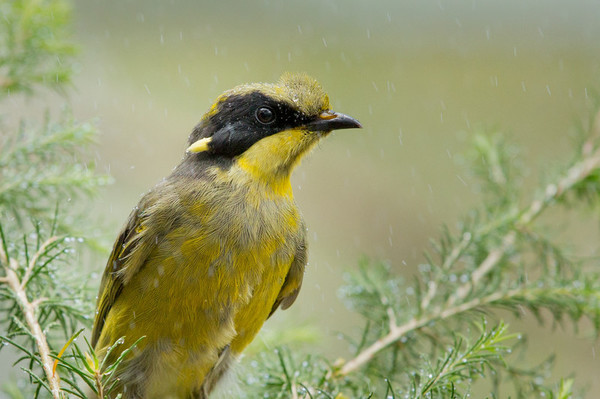By Jed Lanyon
A new research study highlights the harmful effects of inbreeding by the critically endangered Helmeted Honeyeaters as a result of habitat destruction.
Professor Paul Sunnucks from Monash University’s School of Biological Sciences led the study and said the findings have wide-ranging implications for wildlife management.
“Our study combines over 30 years of demanding fieldwork and advanced genetics to quantify how much harm is done by inbreeding in the last wild population of the Helmeted Honeyeater and identifies ways forward,” Mr Sunnucks said.
The study tracked the growth of Helmeted Honeyeaters over a prolonged period.
“Most Helmeted Honeyeaters over that time have been given coloured leg-bands so that their success in life and love can be followed,” said DELWP senior ornithologist Bruce Quin, who led the monitoring.
The result is a detailed account of how long each of the birds lived and how many offspring they had in their lifetimes.
Combining this information on breeding success with advanced genetic analysis, the research team could quantify the profound damage caused to Helmeted Honeyeaters by inbreeding.
The most inbred birds were found to have produced only one-tenth as many young as the least inbred.
Breeding between relatives (inbreeding) has harmful effects called ‘inbreeding depression’, often experienced as a shortened life, a poor breeder or even death.
Not surprisingly then, most animals avoid breeding with their relatives. But when populations become too small, it becomes impossible to find a mate who is not some kind of relation.
“Clearly inbreeding depression is likely to impact the population’s chances of survival,” said the paper’s first author Dr Katherine Harrisson, a Monash PhD graduate now at La Trobe University, and the Arthur Rylah Institute (DELWP).
While inbreeding depression is a big problem, it can be reduced by bringing in ‘new blood’ from a closely-related population.
Such ‘gene pool mixing’ is an emerging approach to help threatened species, but is a difficult task as the wild population of Helmeted Honeyeaters is the last of its kind.
Helmeted Honeyeaters are the most distinctive subspecies of the widespread Yellow-tufted honeyeater.
In careful trials of gene pool mixing, Zoos Victoria has cross-bred Helmeted Honeyeaters with members of the most similar other subspecies.
Dr Michael Magrath, senior research manager from Zoos Victoria said, “Mixing the two subspecies in captivity is going very well, with no signs of genetic or other problems.
“We have plans to release the first out-crossed birds into the wild population at Yellingbo soon.”
Mr Sunnucks said that all being well, gene pool mixing could help overcome the burden of inbreeding depression and bolster an enduring recovery of the Helmeted Honeyeater.
Thanks to conservation actions including captive breeding at Healesville Sanctuary and habitat restoration, there are now about 230 free-living Helmeted Honeyeaters living precariously in a single location at Yellingbo Nature Conservation Reserve.
The Monash-led study involved collaboration with Zoos Victoria, the Victorian Department of Environment, Land, Water and Planning (DELWP), and other conservation partners, with funding from the Australian Research Council.







